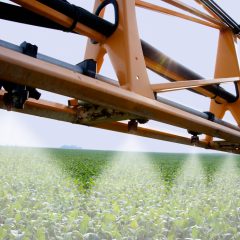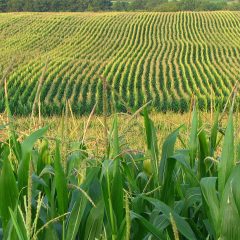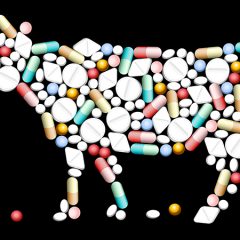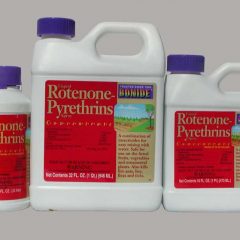Andrew Kniss is a professor at the University Wyoming whose research is partially funded by the pesticide and biotech industry. My research over the last ~15 years has been substantially funded by organic food companies, and foundations that hope to support bio-based innovation in agriculture that leads to healthier food and a lighter environmental footprint. (For […]
Read More, References, Comment »
Farmers are bracing for a rough season contending with the spread of glyphosate-resistant weeds throughout the Heartland. The collapsing efficacy of genetically engineered (GE), herbicide-resistant (HR) technology coincides with a serious downturn in corn, soybean, and cotton prices. Rising costs for GE-HR seed, the need to markedly intensify herbicide use (driving production costs higher), and […]
Read More, References, Comment »
See also: Environmental, Human Health, and Other Impacts of Pesticides General 2018 story on KQED about the impacts of industrial ag on air quality, “Crops May Contribute More to California’s Smog Than Previously Thought” 2015 paper in PeerJ “Significance and value of non-traded ecosystem services on farmland” “Sustainability of three apple production systems,” 2001 article in Nature […]
Despite the mountains of evidence showing that we are loosing the race to preserve the efficacy of medically important antibiotics, sales of these vital drugs to livestock farmers have risen 26% since 2009, according to the latest FDA report on the subject, “Antimicrobials Sold or Distributed for Use in Food Producing Animals”. I first studied […]
Read More, References, Comment »
Keywords Site Map Keywords Navigate the extensive content throughout Hygeia Analytics with the following keywords. Click on the link below to access Hygeia content and pdf resources related to each keyword. 2,4-D, About Hygeia, Animals, Antibiotics, Antioxidants, Aquaculture, Bees, Bt, Cancer Risks, Children, Climate Change, Dairy, Dicamba, Dietary Risks, Economics, Environmental Impacts, Farmworkers, Fat, Food Security, GE Impacts on […]
By Brian Baker Rotenone is a non-synthetic botanical insecticide and piscicide (chemical poisonous to fish) derived from the roots of Derris spp., Lonchocarpus spp. and Tephrosia spp. It has been used historically in organic production, usually with restrictions that limit its impact on human health and the environment. Prior to the isolation and commercialization of organically acceptable formulations […]
Read More, References, Comment »
Dr Michael Antoniou and Dr Robin Mesnage respond to “Expert reaction to multiomics analysis of NK603 GM maize as published in Nature: Scientific Reports” from December 2016 – quotes collected by the Science Media Centre See also: This Hot Science item about about the Mesnage et al. paper. http://www.sciencemediacentre.org/expert-reaction-to-multiomics-analysis-of-nk603-gm-maize/ Dr Dan MacLean, Head of Bioinformatics at The […]
Read More, References, Comment »
Public Perceptions: Social Media Conversations with Dr. Benbrook and Friends, #1 Source: Facebook, September 29, 2016 This conversation was sparked by an thoughtful question about the polarized debate on GMOs from Chris Holman and rolled on from there. For context, this dialogue occurred amidst news about Monsanto’s first CRISPR license, as well as the recent merger […]
Read More, References, Comment »
Acronyms Glossary Click here to download this Acronyms and Glossary file as a pdf Acronyms ADI – Acceptable Daily Intake, a measure of the maximum amount of a pesticide a person can be exposed to without exceeding a regulatory agency’s “level of concern.” ALA- Alpha-Linolenic Acid, the major omega-3 fatty acid in food with health-promoting […]
Historical Documents Historical Documents Pro-active Monitoring presentation at EPA/USDA Workshop on Bt Crop Resistance Management, 1999 “Inheritance of Resistance to Bacillus thuringiensis Toxin (Dipel ES) in the European Corn Borer,” Science, 1999 2001 paper in Science about insect resistance in Bt cotton, “Identification of a Gene Associated with Bt Resistance in Heliothis virescens” “Baby Steps: Conditions Imposed for Crop Year […]






